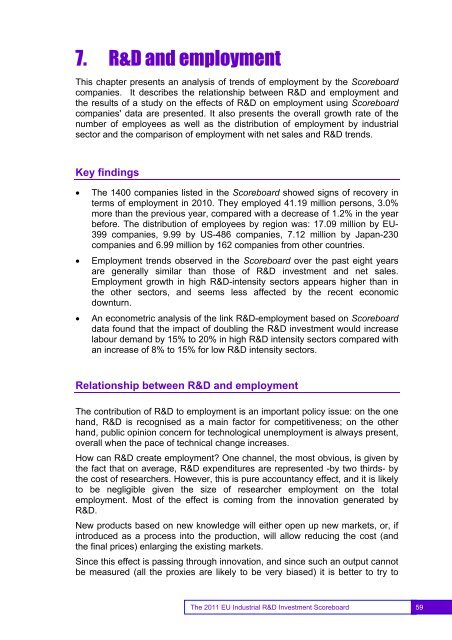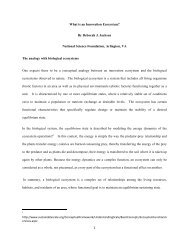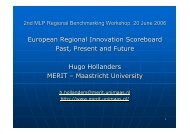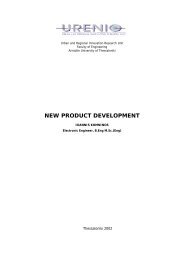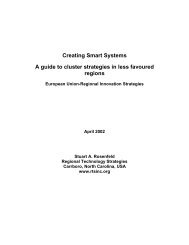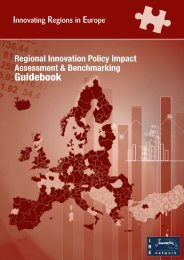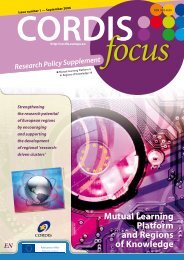EU Industrial R&D Investment Scoreboards 2011
EU Industrial R&D Investment Scoreboards 2011
EU Industrial R&D Investment Scoreboards 2011
Create successful ePaper yourself
Turn your PDF publications into a flip-book with our unique Google optimized e-Paper software.
7. R&D and employmentThis chapter presents an analysis of trends of employment by the Scoreboardcompanies. It describes the relationship between R&D and employment andthe results of a study on the effects of R&D on employment using Scoreboardcompanies' data are presented. It also presents the overall growth rate of thenumber of employees as well as the distribution of employment by industrialsector and the comparison of employment with net sales and R&D trends.Key findings• The 1400 companies listed in the Scoreboard showed signs of recovery interms of employment in 2010. They employed 41.19 million persons, 3.0%more than the previous year, compared with a decrease of 1.2% in the yearbefore. The distribution of employees by region was: 17.09 million by <strong>EU</strong>-399 companies, 9.99 by US-486 companies, 7.12 million by Japan-230companies and 6.99 million by 162 companies from other countries.• Employment trends observed in the Scoreboard over the past eight yearsare generally similar than those of R&D investment and net sales.Employment growth in high R&D-intensity sectors appears higher than inthe other sectors, and seems less affected by the recent economicdownturn.• An econometric analysis of the link R&D-employment based on Scoreboarddata found that the impact of doubling the R&D investment would increaselabour demand by 15% to 20% in high R&D intensity sectors compared withan increase of 8% to 15% for low R&D intensity sectors.Relationship between R&D and employmentThe contribution of R&D to employment is an important policy issue: on the onehand, R&D is recognised as a main factor for competitiveness; on the otherhand, public opinion concern for technological unemployment is always present,overall when the pace of technical change increases.How can R&D create employment? One channel, the most obvious, is given bythe fact that on average, R&D expenditures are represented -by two thirds- bythe cost of researchers. However, this is pure accountancy effect, and it is likelyto be negligible given the size of researcher employment on the totalemployment. Most of the effect is coming from the innovation generated byR&D.New products based on new knowledge will either open up new markets, or, ifintroduced as a process into the production, will allow reducing the cost (andthe final prices) enlarging the existing markets.Since this effect is passing through innovation, and since such an output cannotbe measured (all the proxies are likely to be very biased) it is better to try to59The <strong>2011</strong> <strong>EU</strong> <strong>Industrial</strong> R&D <strong>Investment</strong> Scoreboard 59


